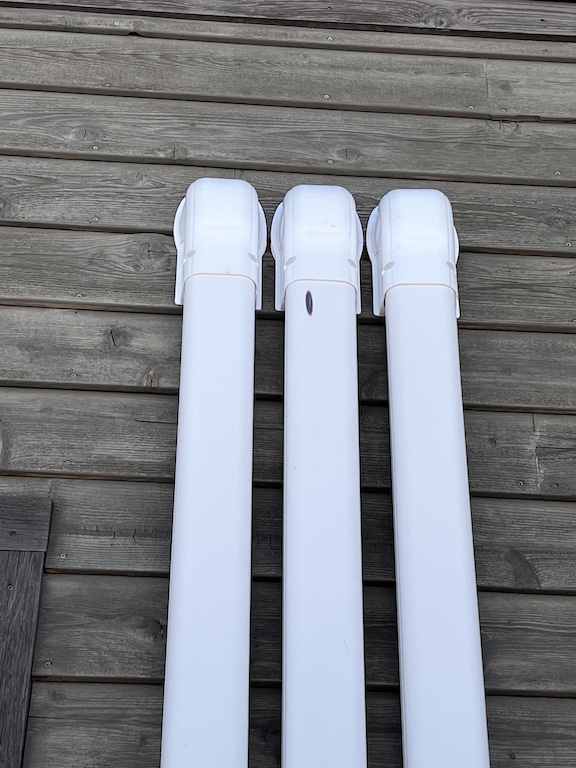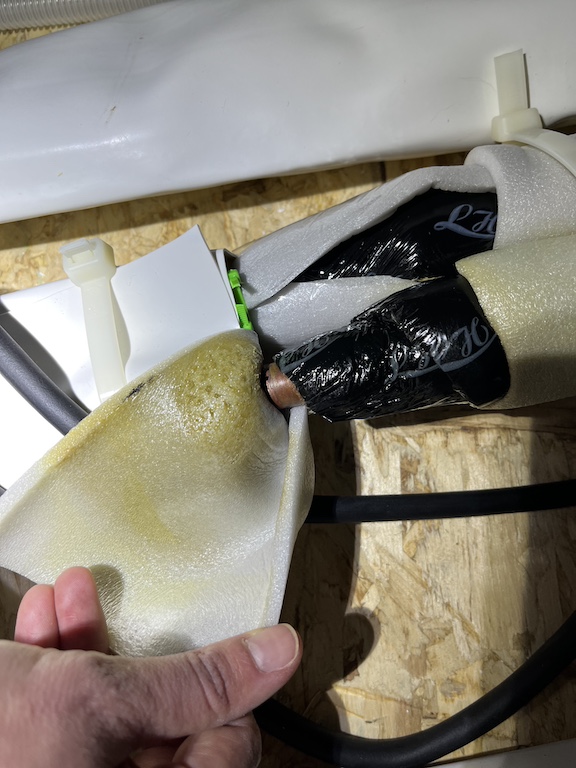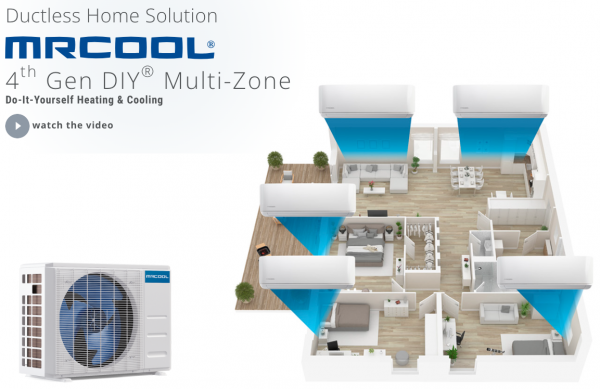Katy Hollbacher interviews Laken Allen
Today I'm interviewing my colleague Laken Allen. She's a homeowner in Victor, Idaho with husband Sam, 1-yr old Auggie, and dogs Wilson and Dory. Before their baby arrived, she and Sam decided to purchase the MRCOOL "DIY" multi-zone mini-split heat pump system and install it in their home. Read on to learn more about their experiences and lessons learned!
Q. What's the history of your home, and what motivated you to pursue a new heating system?
A. Our three bedroom home was built in 2005 and we bought it in 2017. The home had a propane fireplace in the living room and electric resistance wall heaters. Our home is built with SIPS panels and is well insulated, but the heating systems were severely undersized! My friends unaffectionately called it "the cold house". We had lived with it but wanted our house to be warmer before Auggie arrived.
Q. Why did you decide on MRCOOL?
We had an energy assessment completed to understand where to focus our efforts, and did heating load calculations to confirm the systems were undersized. We first considered a single-zone mini-split heat pump just for the living room, which was the biggest issue with its high ceilings, larger space and biggest heat losses. Then we heard about MRCOOL from coworkers and research. Their DIY option was much less expensive and could also provide efficient heating in the two spare bedrooms with the multi-zone system. The equipment was about 1/3 the cost compared to quotes from local contractors to install a similar system.
Q. How'd it go?
MRCOOL did a good job with videos that gave us confidence that as "mid to advanced" level DIY'ers, we could do it ourselves. That was our perspective going into it. But it ends up the actual install was more complicated in our situation. We had to troubleshoot how to hang the outdoor unit on SIPS and how to bore holes through the panels, which is harder than with standard construction. Both of those ended up not being that complex, but we hadn't anticipated those challenges. Another issue is that the precharged refrigerant lines are offered in only two lengths, 16' and 25'. You can couple them as long as you stay within the total length allowed but you inevitably end up with excess lines you need to hide or store somewhere.
We were diligent about checking for leaks when we did the initial setup and followed MRCOOL's instructions to a T. Mainly this meant spraying soapy water onto the connections and looking for bubbles to appear. We found no suspect connections. We also had to bend the lines 90º to get them where they needed to go. MRCOOL's guidance was to "do it slowly" and we did, but in hindsight we wondered if the lines still got kinked since we had issues later.
Our first issue was that we noticed a cover over one of the lines near the outdoor unit had a burn mark. The lineset was melting the plastic cover! The lines were overheating and MRCOOL said we used too much line (and so did not have enough refrigerant) but we were well under their line length limit. MRCOOL paid for a local technician to come out and add refrigerant to the system, which resolved that issue.


But then in the middle of August, the night we brought our newborn home, our A/C was on and water started pouring out of the system down the wall in the nursery. This was traced back to low refrigerant, so the system was working too hard, causing ice build up that melted and there was too much water for the condensate drain to handle. MRCOOL did not pay to resolve this issue.
Then we kept getting error codes in the living room indoor unit. After a bunch of troubleshooting, MRCOOL sent us a new circuit board and a local technician came to install it. But we still had error codes! A technician came out to comprehensively review everything and they found a miniscule leak in the nursery, very close to the indoor head and the lineset. They addressed the leak and added more refrigerant but we still had error codes. I could go on but I'll leave it at this—after many more months we finally managed to get through directly to the owner of MRCOOL and he agreed to provide new equipment and installation. As of the last couple of months, so far so good!
Q. What's your advice for MRCOOL as a company?
I just think if they're going to bill themselves as a DIY company, they need to have better customer service. Yes it's DIY, but things are going to come up. This isn't a ceiling fan. You're dealing with refrigerant. And while the warranty has covered replacement parts, MRCOOL hasn't paid for shipping. Also we don't live in a place that has "MRCOOL approved" technicians nearby—and local companies are hesitant to service our system since they didn't install it.
I hope that we got a "lemon" or that issues have been addressed with the latest 4th generation product since we originally got the 3rd generation. And I hope MRCOOL is able to work through the challenges since I really appreciate their mission of empowering homeowners to reduce the costs of efficient and comfortable heat pump systems.
Q. What's your advice to homeowners considering DIY?
DIY has its advantages and situations where it makes sense. But I would really do a lot of research and thinking through all aspects of DIY install, maintenance and servicing. If you just wanted to heat your garage, or had a straightforward single-zone install where you didn't need to bend or couple lines, maybe it would be fine. In hindsight for us, we'd rather have spent 3x more for the peace of mind of having a local contractor install and service our system. If we could do it all over again, we would hire out the work and just do a simple single-zone mini-split in the living room, then consider doing the bedrooms later. The bedrooms are fairly small and easy to heat and so the electric resistance heating isn't a big concern for us in terms of energy use and cost.
I will say that with the system now working, it's great! Our home is warmer and more comfortable, and it's easy to keep our baby's room consistently warm. I remain wholly committed to heat pumps as a technology but would advise homeowners to spend the extra money to have a qualified professional do the install.






























